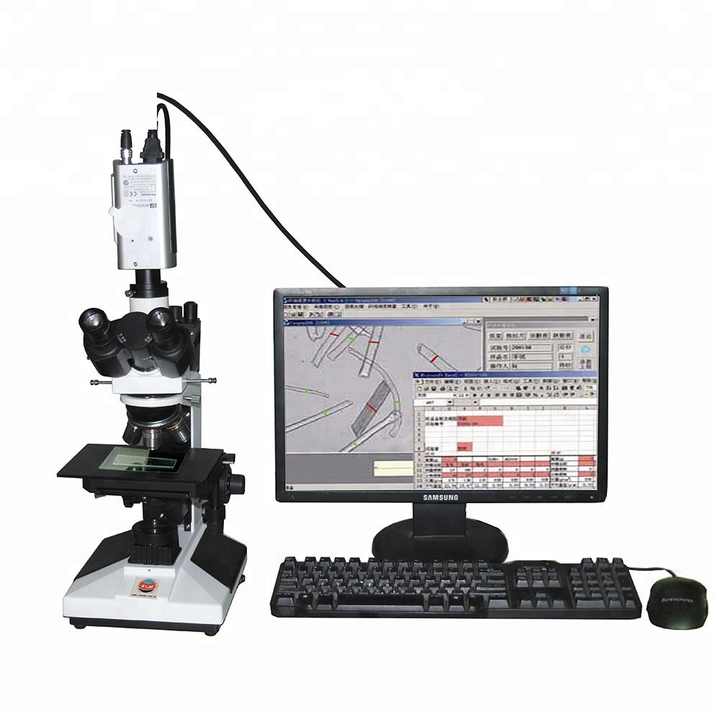Unlock Precision: The Ultimate Guide to Optical Fiber Size Analyser Tools
Accurate measurement of optical fibre diameter is essential for boosting the efficiency and integrity of fiber optic systems. As we take a look at these tools, it ends up being evident that the future of optical fibre analysis is advancing rapidly, increasing inquiries about exactly how these developments will certainly impact the industry.
Value of Optical Fiber Dimension
Precisely gauging optical fibre diameter is crucial in guaranteeing optimal performance and dependability in interaction systems. The diameter of optical fibres straight influences their light transmission capabilities, impacting bandwidth, depletion, and overall signal honesty. A precise measurement is necessary to preserve the preferred specs for various applications, including telecommunications, data transmission, and noticing technologies.
Irregular or incorrect fibre sizes can result in raised losses and decreased efficiency, inevitably compromising the performance of the entire interaction network. Furthermore, variants in size can trigger problems in splicing and connecting fibers, causing greater functional expenses and potential system failures. Carrying out strenuous measurement procedures is crucial.

Sorts Of Size Analyser Tools
To achieve dependable optical fibre measurements, different diameter analyser tools are utilized, each created to deal with particular measurement needs and applications (optical fibre diameter analyser). These devices can be broadly classified into three main kinds: manual, semi-automated, and completely automated analyzers
Hand-operated size analyzers are generally utilized in smaller sized labs or operations where precision is called for yet manufacturing volume is low. They supply operators straight control over the measurement procedure, permitting mindful changes and verifications.
Semi-automated size analyzers improve effectiveness by combining hands-on input with automated features. These tools frequently include easy to use user interfaces that improve the dimension procedure while still permitting operator oversight.
Totally automated diameter analyzers stand for the peak of measurement innovation. These innovative systems incorporate innovative sensing units and software to provide real-time measurements with very little user intervention. They are suitable for high-volume manufacturing environments, guaranteeing consistent precision and rapid data collection.
Each kind of size analyser offers distinct functional demands, making it important for users to meticulously evaluate their details demands when selecting the appropriate tool for optical fiber dimension.
Key Attributes to Think About
When selecting an optical fibre diameter analyser, a number of vital functions call for careful factor to consider to ensure optimum performance and reliability. Measurement precision is critical; look for tools that use high-resolution analyses, ideally in micrometers, to make certain accuracy in diameter assessment. Additionally, the rate of dimension is vital, specifically in manufacturing settings where performance is important.
Another vital feature is the calibration procedure, as a reliable analyser needs to supply uncomplicated calibration treatments to preserve measurement stability over time. The series of sizes the tool can determine is likewise considerable; make certain that it suits the particular fibre kinds relevant to your applications.
Portability may be a consideration, specifically for fieldwork; small and lightweight styles boost functionality in numerous settings. In addition, easy to use user interfaces and software application compatibility can promote smoother operation and information evaluation.
Lastly, think about the support and warranty supplied by the maker; trustworthy client service and comprehensive guarantee alternatives can guard your financial investment and make certain browse around this site long-term fulfillment. By concentrating on these features, you can choose an optical fibre size analyser that meets your particular demands and boosts your operational capabilities.
Ideal Practices for Use
Efficient use of optical fiber size analysers hinges on an extensive understanding of ideal methods that boost measurement dependability and accuracy. Ensure that the analyser is adjusted correctly before each usage. Calibration versus understood requirements reduces prospective errors and develops a standard for succeeding measurements.
2nd, preserve a clean atmosphere. Dirt, moisture, or pollutants on the analyser or the fibre's lenses can alter outcomes. On a regular basis examine and cleanse both the fibre and the equipment to maintain ideal performance.

Additionally, perform dimensions at regular temperature levels and moisture levels, as ecological variables can impact outcomes. Paper each measurement diligently, keeping in mind conditions and any anomalies experienced during the procedure.
Future Trends in Optical Fibre Analysis
As the demand for high-performance optical fibers proceeds to increase, advancements in analysis strategies are readied to transform the market (optical fibre diameter analyser). Future trends in optical fiber analysis will likely be driven by raised automation and the combination of synthetic intelligence (AI) and artificial intelligence (ML) modern technologies. These technologies guarantee to enhance data precision, reduce analysis time, and enable real-time tracking of fibre high quality
Additionally, the development of straightforward and mobile analysis tools will certainly facilitate on-site evaluations, enabling for better versatility and efficiency in production atmospheres. Improved imaging modern technologies, such as high-resolution imaging and spectral analysis, are expected to supply much deeper understandings right into fiber attributes, allowing makers to maximize their procedures further.
Moreover, as industries progressively embrace sustainability, there will be a promote environmentally friendly products and techniques in optical fibre manufacturing. This shift will demand brand-new logical techniques to assess the performance and long life of these products under varying conditions.
Verdict
Accurate dimension of optical fibre diameter is essential for enhancing performance and guaranteeing dependability in interaction systems. Proceeded technology will additionally enhance the precision and efficiency of optical fibre evaluation.
Accurate measurement of optical fiber diameter is important for boosting the performance and dependability of fibre optic systems. In an increasingly connected globe, where high-speed information transmission is vital, the role of precise optical fibre diameter dimension can not be overstated, as it serves as the structure for durable communication infrastructure.When picking an optical Read Full Report fibre diameter analyser, a number of crucial functions require mindful consideration to make certain optimal efficiency and integrity.Effective use of optical fibre diameter analysers pivots on a thorough understanding of finest techniques that enhance measurement integrity and accuracy.Precise measurement of optical fiber diameter is important for optimizing performance and making sure reliability in interaction systems.
Comments on “How an Optical Fibre Diameter Analyser Delivers Consistent Results”